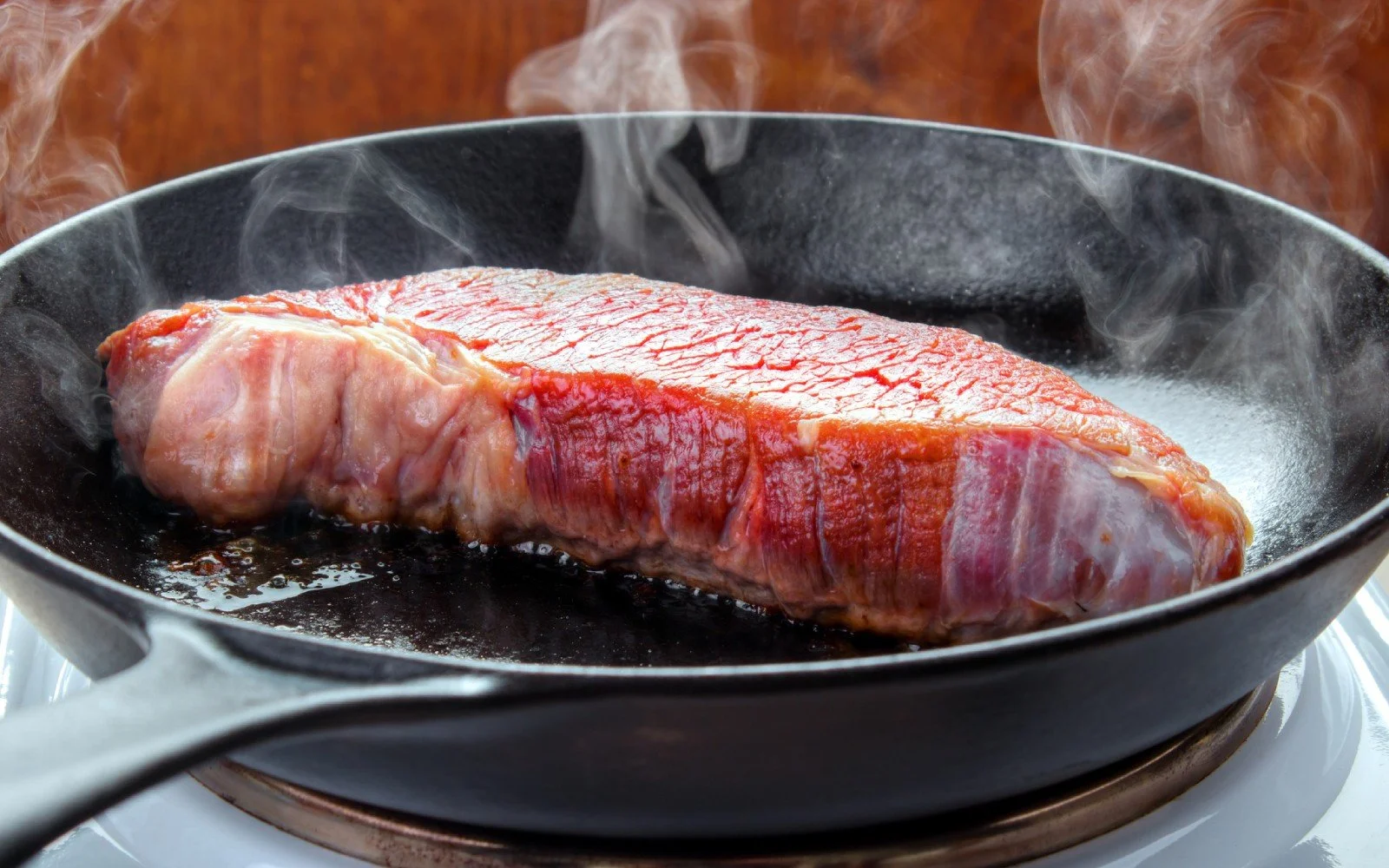The Maillard Reaction – “It's Not Burnt, It's Flavor!”
Discover > Texas Home Cooking > The Maillard Reaction – “It's Not Burnt, It's Flavor!”
Texans love their steak. Whether the cut is being grilled or pan-seared, one skill in particular that those in Texas have perfected is achieving that delicious “browning” on the meat’s surface. This browning is produced as a result of a precise mix of high temperature and grilling time and is associated with a tasty, juicy, and aromatic steak masterpiece.
People who aren’t accustomed to cooking steak may see this brown color as a sign that the meat has been overcooked, or even burnt. But this isn’t the case – the brown color simply means lots of flavor and aroma.
The moment when the surface of the steak turns brown is called the “Maillard reaction”. This term is used to describe a series of chemical processes that results in this delicious brown crust that forms on beautifully grilled meat.
Louise Camille Maillard
Louise Camille Maillard was from France, not Texas – but I do hope someone makes him an honorary Texan for his scientific contribution to Texas cuisine! Maillard gave us a proper scientific explanation for the profusion of aroma and flavor associated with this browning effect.
A physician and chemist, Maillard researched the reactions between amino acids and sugars. In one particular study in 1912, Maillard noted that upon gently heating sugar and amino acids in water, a yellow-brown color developed. Usually, a change of color in food is brought about by the action of enzymes, with enzymatic browning most commonly signaling quality loss, particularly among fruits and vegetables.
However, Maillard reported that this was a non-enzymatic browning – something that enhances food quality by building new chemical compounds that change the color, texture, and flavor of the food product.
These brown compounds are called “melanoidins”, and they give flavor not just to steak, but also to baked bread, roasted coffee, fried chicken, waffles, and much more! We love you, melanoidins!
The Process
Below is the step-by-step process that occurs when our food is subjected to a Maillard reaction:
Glucose or fructose, which are reducing sugars, react with amino acids.
Amadori compounds are formed – these are odorless and tasteless at first.
Dicarbonyls, a kind of flavor compound, are then produced.
Hundreds of various by-products are created, which affect the color, aroma, texture, and flavor of the food item.
A deep-brown color develops on the surface of the food. This color is produced by melanoidins.
The Maillard reaction can be accelerated by applying high heat. Once the temperature of the food reaches 300°F, the Maillard reaction is in full swing. However, it’s important to note that cooking food at these high temperatures is only effective for a few minutes. If you cook your meat using direct heat for an extended period, the food will (naturally) become overcooked, black, and bitter-tasting – in other words, burnt.
Since Maillard reactions are associated with high temperatures, chefs often initially subject a cut of meat to high heat (e.g. by frying it) in order to achieve the desired flavor and texture, before going on to use a slow-cooking method to get it juicy and tender.
Reducing surface moisture plays a key role in perfecting the Maillard reaction, as only a small amount of water is needed at a molecular level to support the browning process. If your meat has excess surface moisture, all the cooking heat will just be used to evaporate this water. And as a result, your meat will boil instead of becoming brown – and who wants a gray-colored steak?
To reduce excess moisture prior to cooking, you should dry the surface of the meat with a paper towel, air-dry the cut in the refrigerator overnight, and add salt to the sides of the meat to prevent excess moisture.
As water will leak out of the food while it’s cooking, maintaining a high heat in your pan will hasten the evaporation of excess water. For example, if you’re cooking fried chicken, reducing the moisture will lead to perfect crispy, golden-brown skin.
Another factor that influences the success of the Maillard reaction is the level of acidity. The more acidic the food is (pH 6 and below), the less browning will occur. Therefore, if possible, it’s a good idea to add something alkaline to your food item, such as baking soda (how long does baking soda last?), to promote the desired browning effect.
Achieving the Maillard Reaction
When we cook food over direct heat, compounds are formed which produce various scents and flavors. This aroma activates an inherent survival instinct in our brain, triggering our saliva glands when food is near. The Maillard reaction hastens this instinct, which is why we get hungry (and our mouth waters!) when we catch a whiff of a steak being fried.
So the next time you cook a steak, don’t worry when it starts to go dark brown on the outside. It’s not burnt – it’s just the Maillard reaction!




